| Listing 1 - 10 of 15 | << page >> |
Sort by
|
Book
ISBN: 9789401465762 Year: 2020 Publisher: Gent Academia Press
Abstract | Keywords | Export | Availability | Bookmark
 Loading...
Loading...Choose an application
- Reference Manager
- EndNote
- RefWorks (Direct export to RefWorks)
General ethics --- Zoology --- wetenschappelijk onderzoek --- proefdieren
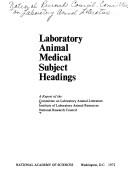
ISBN: 0309019338 Year: 1972
Abstract | Keywords | Export | Availability | Bookmark
 Loading...
Loading...Choose an application
- Reference Manager
- EndNote
- RefWorks (Direct export to RefWorks)
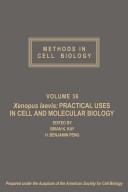
ISBN: 0125641362 Year: 1991 Volume: vol 36 Publisher: Orlando London Toronto Academic Press
Abstract | Keywords | Export | Availability | Bookmark
 Loading...
Loading...Choose an application
- Reference Manager
- EndNote
- RefWorks (Direct export to RefWorks)
Book
ISBN: 9282796949 9789282796948 Year: 1997 Publisher: Luxembourg : Office des publications officielles des communautés européennes = Office for official publications of the European communities = OPOCE,
Abstract | Keywords | Export | Availability | Bookmark
 Loading...
Loading...Choose an application
- Reference Manager
- EndNote
- RefWorks (Direct export to RefWorks)
Euthanasia of animals --- Laboratory animals --- Euthanasie chez les animaux --- Animaux de laboratoire --- -Proefdieren : euthanasie --- Animal euthanasia --- Euthanasia of pets --- Pet euthanasia --- Veterinary euthanasia --- Animals --- Euthanasia --- Pets --- Proefdieren : euthanasie --- Euthanasia of animals - European Union countries --- EUTHANASIA --- ANIMALS, LABORATORY --- PAIN --- VETERINARY
Book
ISBN: 9789035612372 Year: 2009 Publisher: Geel Campinia Media
Abstract | Keywords | Export | Availability | Bookmark
 Loading...
Loading...Choose an application
- Reference Manager
- EndNote
- RefWorks (Direct export to RefWorks)
In dit boek maakt u kennis met de verschillende soorten toxicologietests die momenteel vereist zijn voor geneesmiddelen, chemicaliën, bestrijdingsmiddelen en cosmetica. De tests worden eenvoudig uitgelegd aan de hand van figuren en voorbeelden. Naast de testmethoden wordt ook een idee gegeven omtrent de evolutie van de toxicologie, toxicologische principes, en veel voorkomende intoxicaties bij de mens. Aanleiding voor het schrijven van dit boek zijn de evoluties die plaatsgrijpen in het toxicologisch onderzoek, waarbij in vivo toxicologietests zoveel mogelijk vervangen worden door in vitro tests en alternatieve methoden. Niet alle tests bij proefdieren kunnen vervangen worden, maar vaak kunnen ze wel verminderd of verfijnd worden, met als doel toch gelijkwaardige resultaten te bekomen voor de veiligheidsbeoordeling van de producten voor mens en milieu. In dit boek maakt u kennis met de verschillende soorten toxicologietesten die momenteel vereist zijn voor geneesmiddelen, chemicaliën, bestrijdingsmiddelen en cosmetica. De testen worden eenvoudig uitgelegd aan de hand van figuren en voorbeelden. Naast de testmethoden wordt ook een idee gegeven omtrent de evolutie van de toxicologie, toxicologische principes, en veel voorkomende intoxicaties bij de mens. Aanleiding voor het schrijven van dit boek zijn de evoluties die plaatsgrijpen in het toxicologisch onderzoek, waarbij in vivo toxicologietesten zoveel mogelijk vervangen worden door in vitro testen en alternatieve methoden. Niet alle testen bij proefdieren kunnen vervangen worden, maar vaak kunnen ze wel verminderd en verfijnd worden, met als doel toch gelijkwaardige resultaten te bekomen voor de veiligheidsbeoordeling van de producten voor mens en milieu. (Bron : covertekst.)
615.9 --- toxicologie --- Toxicologie --- algemene toxicologie --- milieuanalyse --- technologisch onderzoek --- Toxicology --- voedingschemie --- in vitro --- geneesmiddelen --- in vivo --- proefdieren --- farmacologie --- gerechtelijke geneeskunde --- Toxicologie. --- History --- Toxicity testing --- Methods
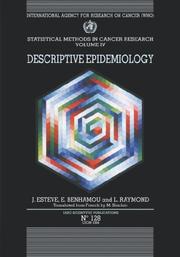
ISBN: 9283211820 9283211324 9283211790 9283221281 9789283211327 9789283211792 9789283211822 9789283221289 Year: 1980 Volume: 32, 79, 82, 128 Publisher: Lyon International Agency For Research On Cancer
Abstract | Keywords | Export | Availability | Bookmark
 Loading...
Loading...Choose an application
- Reference Manager
- EndNote
- RefWorks (Direct export to RefWorks)
Epidemiology --- Oncology. Neoplasms --- Mathematical statistics --- Kanker --- Medisch onderzoek --- Cancer --- Recherche médicale --- Research --- Statistical methods --- Proefdieren. Kanker. --- Cancer. Recherche scientifique. --- Animaux de laboratoire. Cancer. --- Kanker. Wetenschappelijk onderzoek. --- Cancer - Research - Statistical methods --- Cancer - Epidemiology - Statistical methods --- NEOPLASMS --- WORLD HEALTH ORGANIZATION --- EPIDEMIOLOGY --- STATISTICS
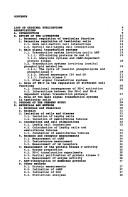
ISBN: 9518804516 Year: 1990 Volume: vol 74 Publisher: Turku : Turun Yliopisto,
Abstract | Keywords | Export | Availability | Bookmark
 Loading...
Loading...Choose an application
- Reference Manager
- EndNote
- RefWorks (Direct export to RefWorks)
Mecanismes paracriniens --- Paracriene mechanismen --- Paracrine mechanisms --- Rats as laboratory animals --- Rats comme animaux de laboratoire --- Ratten als proefdieren --- Testicule --- Testis --- Gonadotropin --- Paracrine mechanisms. --- Protein kinases --- Rats --- Physiological effect. --- Physiology. --- Physiology --- Physiological effect --- Endocrine glands --- Gonadotrophines --- Hormones hypophysaires
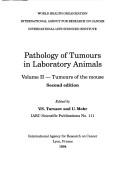
ISBN: 9283211995 Year: 1990 Volume: vol 99 Volume 1 Publisher: Lyon : I.A.R.C. (International agency for research on cancer),
Abstract | Keywords | Export | Availability | Bookmark
 Loading...
Loading...Choose an application
- Reference Manager
- EndNote
- RefWorks (Direct export to RefWorks)
Animals [Experimental ] --- Animals [Laboratory ] --- Animals in research --- Animaux de laboratoire --- Experimental animals --- Experimental pathology --- Experimentele pathologie --- Lab animals --- Laboratory animals --- Neoplasms --- Pathologie expérimentale --- Pathology [Experimental ] --- Proefdieren --- Tumeurs --- Tumoren --- Tumors --- Tumours --- Rats as laboratory animals --- Rats comme animaux de laboratoire --- Ratten als proefdieren --- -Tumors in animals --- Rats --- -Pathology, Comparative --- Carcinogenicity testing --- Kanker --- Tumor --- Dierproef --- Carcinogenesis --- Carcinogenic activity testing --- Carcinogens --- Testing for carcinogenicity --- Chronic toxicity testing --- Oncology, Experimental --- Comparative pathology --- Medicine, Comparative --- Rat --- Muridae --- Animal tumors --- Tumors, Animal --- Veterinary oncology --- Pathology --- Cysts (Pathology) --- Oncology --- Animal models --- Diseases --- Cancer --- Tumeur --- Expérimentation animale --- Testing --- Pathology, Comparative --- Tumors in animals --- NEOPLASMS --- RATS --- PATHOLOGY --- ATLASES --- ULTRASTRUCTURE
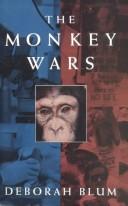
ISBN: 0195094123 019510109X Year: 1994 Publisher: New York Oxford University Press
Abstract | Keywords | Export | Availability | Bookmark
 Loading...
Loading...Choose an application
- Reference Manager
- EndNote
- RefWorks (Direct export to RefWorks)
Animal experimentation --- Animal liberation --- Animal rights --- Animal's rights --- Animaux [Droits des ] --- Animaux [Expérimentation sur les ] --- Apen als proefdieren --- Dieren [Proefnemingen op ] --- Dieren--Rechten --- Droits des animaux --- Experimentation on animals --- Expérimentation animale --- Monkeys as laboratory animals --- Primaten als proefdieren --- Primates as laboratory animals --- Primates comme animaux de laboratoire --- Proefnemingen op dieren --- Rechten van de dieren --- Rights of animals --- Singes comme animaux de laboratoire --- Laboratory animals --- Animals' rights --- Animal welfare --- Zoopery --- Research --- Moral and ethical aspects --- Animal experimentation. --- Animal rights. --- Monkeys as laboratory animals. --- Primates as laboratory animals.
Dissertation
ISBN: 9789058676207 Year: 2007 Volume: 399 Publisher: Leuven Universitaire Pers Leuven
Abstract | Keywords | Export | Availability | Bookmark
 Loading...
Loading...Choose an application
- Reference Manager
- EndNote
- RefWorks (Direct export to RefWorks)
Astma is een chronische inflammatoire luchtwegaandoening, welke gekenmerkt wordt door reversiebele luchtwegobstructie en hyperreactiviteit (een overdreven bronchoconstrictie t.o.v. prikkels als metacholine en histamine). In het algemeen kan men twee subtypes onderscheiden in astma: ongeveer 60 tot 90% van alle astmapatiënten lijdt aan extrinsiek of allergisch astma. Deze patiënten zijn gesensitizeerd tegen allergenen waarmee ze in contact kwamen en zij vertonen een verhoogde serumgehalten van IgE (totaal IgE alsook allergeen-specifiek IgE). De prevalentie van allergisch astma kende een gestage maar onverklaarde groei gedurende de voorbije decennia zodat nu ongeveer 10% van de volwassenen en 20% van de kinderen in Noord-Amerika, Europa en Australia aan deze ziekte lijden. Astma veroorzaakt nog steeds enorm veel morbiditeit en mortaliteit. Verder onderzoek naar de pathofysiologie van deze aandoening is dan ook gerechtvaardigd en noodzakelijk voor de ontwikkeling van nieuwe behandelingsstrategieën en van preventieve maatregelen. Wanneer een patient met allergisch astma blootgesteld wordt aan het specifieke allergen treedt er binnen het kwartier na inhalatie bronchoconstrictie op t.g.v. degranulatie van mast cellen in de luchtweg (de vroege respons). Bij een aantal patiënten persisteert deze luchtwegvernauwing of keert ze terug na een paar uur, met een maximale vernauwing 6 tot 12 uur na blootstelling (de late fase respons). Algemeen wordt aangenomen dat deze late fase respons veroorzaakt wordt door infiltratie en activatie van inflammatoire cellen ( CD4+ T cellen, eosinofiele en neutrofiele granulocyten) in de luchtweg. Th (T helper) cellen zijn de hoofdvertolkers in de adaptieve immuunrespons en in ontstekingsfenomenen. Bij astma wordt het ingeademde allergeen opgenomen en tot peptides verwerkt door gespecialiseerde antigeen-presenterende cellen, de dendritische cellen. Deze peptides worden in de context van MHC klasse II moleculen aangeboden aan de antigeen-specifieke T helper cel. De aldus geactiveerde T helper cel secreteert hierop cytokines die tot inflammatie leiden. Bij muizen werden twee subsets van Th cellen gekarakteriseerd: Th1 cellen enerzijds secreteren IL-2, IFN-g en TNF-b maar geen IL-4 of IL-5; anderzijds produceren Th2 cellen IL-4, IL-5, IL-13 maar geen IL-2 of IFN-g. Ook bij mensen kan men Th1 en Th2 cellen onderscheiden. De hypothese is dat geactiveerde Th2 cellen en de cytokines die ze secreteren verantwoordelijk zijn voor het initiëren en onderhouden van de inflammatie in astma. In dit doctoraatsonderzoek wordt een muismodel van ovalbumine(OVA)-allergische luchtweginflammatie gebruikt. Het protocol omvat systemische sensitizatie met OVA gevolgd door herhaalde blootstelling aan verneveld OVA. Aldus behandelde muizen vertonen een aantal kenmerken van astma in de mens en vormen dan ook een interessant onderzoeksobject in de speurtocht naar de immunologische basis van allergische luchtweginflammatie. In dit model hebben we een allergeen-specifieke late stijging in de bronchiale tonus opgewekt, welke gepaard ging met een enorme toename van lymfocyten, eosinofiele en neutrofiele granulocyten en macrofagen tesamen met een gestegen gehalte aan Th2 cytokines in het broncho-alveolaire lavage (BAL) vocht en in het longweefsel. Depletie van CD4+ cellen voor blootstelling aan het allergeen onderdrukte deze respons. Voorafgaande depletie van CD8+ cellen had geen effect. We vonden geen éénduidige verklaring voor deze bevinding; veranderingen in expressie van bepaalde onderzochte cytokines (IL-13 en IFN-g), chemokines (MCP-1) en VCAM-1 spelen klaarblijkelijk een rol in dit effect. Deze bevindingen bevestigen opnieuw de essentiële rol van de T cel in allergisch astma en het model van de late bronchoconstrictie belooft een nuttig model te zijn voor verdere studie van de pathofysiologie van astma. Tot voor kort werd aangenomen dat het bevorderen van Th1 responsen de pathologische Th2 respons, kenmerkend voor astma, kon onderdrukken. In dit werk tonen we aan dat neutralizatie van IL-12, een Th1-inducerend cytokine, tijdens de fase van herhaalde luchtwegblootstelling aan OVA bij gesensitiseerde muizen, paradoxaal zorgde voor een verbetering van de allergische respons: luchtweghyperreactiviteit, Th2 cytokineproductie, allergeen-specifiek IgE alsook het aantal CD3+CD4+ cellen en eosinofiele granulocyten in het BAL vocht waren alle significant lager. Deze bevindingen duiden op een essentiële rol voor IL-12 in allergische luchtweginflammatie. Dit onverwachte pro-inflammatoire effect van IL-12 werd niet aangetoond in IFN-g-KO muizen. Deze gegevens suggereren dat Th1 bijdragen tot de pathogenese van astma en dat IFN-g, het prototypische Th1 cytokine een belangrijke rol speelt in allergische luchtweginflammatie. Recent werden Th17 cellen erkend als volwaardige effector T helper cellijn. Hun precieze rol in allergische luchtweginflammatie is vooralsnog onduidelijk en werd in deze thesis verder onderzocht. We tonen hier een dosisdependente stijging aan van IL-17 geïnduceerde IL-5 secretie door allergeen-gestimuleerde monoclonale T cellen. Intra-tracheale toediening van IL-17 leidde zowel in naïeve als in allergische muizen tot een toename van neutrofiele granulocyten en macrofagen in het BAL vocht in afwezigheid van enig effect op de bronchiale tonus. Tenslotte toonden we dat neutralizatie van IL-17 tijdens de sensitisatiefase van het model leidt tot een gedaald IgE gehalte doch een stijging van de luchtweghyperreactiviteit en cellulaire inflammatie in de luchtweg. Deze data suggereren een versterkte Th2 sensitisatie in de afwezigheid van IL-17 en benadrukken de complexiteit van de interactie tussen IL-17/Th17, naïeve T cellen en Th2 cellen. In zijn geheel leert dit onderzoek ons dat de verhouding tussen luchtweginflammatie en de ernst van de astmatische respons in termen van luchtweghyperreactiviteit en één-seconde-waarde niet éénduidig is. Ook blijken zowel Th1, Th2 als Th17 cellen bij te dragen tot de pathogenese van astma. Deze stelling impliceert dat niet Th1 cellen, maar andere cellen en mechanismen moeten zorgen voor onderdrukking van inflammatie en voor de bescherming tegen allergie. Verder onderzoek is nodig om deze regulatoire mechanismen te identificeren en ze evt. toe te passen in de klinische praktijk voor de behandeling en preventie van astma. Asthma is a chronic inflammatory disorder of the respiratory system, characterized by reversible airflow obstruction and by airway hyperresponsiveness, an exaggerated bronchospastic response to non-specific agents such as metacholine or histamine. In general, two subtypes of asthma are distinguished. Extrinsic/allergic asthma affects 60-90% of asthma patients, occurs in the context of sensitization towards environmental allergens and is accompanied by elevated serum IgE levels (total and allergen-specific). The prevalence of allergic asthma has been increasing over the last decades with approximately 10% of the adult population and 20% of children in Northern America, Europe and Australia suffering from asthma. This rise is up till now ill-explained. Because asthma causes significant morbidity and mortality, further research into the pathophysiological mechanisms of allergic asthma is warranted. This might also lead to new therapeutic and/or preventive strategies. Provocation of an allergic asthmatic individual with allergen results in airway narrowing within 15 minutes after inhalation as a result of mast cell degranulation (the early phase response). In a subset of patients, this airway obstruction persists or recurs after several hours to reach a maximum over 6 to 12 hours, resolving within 24 hours (the late phase response). The LPR is believed to reflect local influx and activation of inflammatory cells (CD4+ T cells, eosinophils, neutrophils) in the airway. Th (T helper) cells are the key players in adaptive immune responses and in inflammation. In the allergic type of asthma, inhaled allergen is taken up and processed by specialized antigen-presenting cells, the dendritic cells into peptides, which are presented to antigen-specific T helper cells (Th) in the context of MHC class II. Activated T cells then secrete cytokines that lead to inflammation. Two subsets of Th cells were identified in mice: murine Th1 cells produce IL-2, IFN-g and TNF-b but no IL-4 or IL-5 whereas Th2 cells produce IL-4, IL-5, IL-13 but no IL-2 or IFN-g. In asthma, the hypothesis is that activated CD4+ Th2 cells and the gamma of cytokines they elaborate (IL-13, IL-4, IL-5, and IL-9) initiate and sustain airway inflammation. In this doctoral research project, we used a murine model of ovalbumin(OVA)-allergic airway inflammation with a biphasic protocol consisting of systemic sensitization with adjuvant-free OVA and airway challenges with nebulized OVA. Accordingly treated mice exhibit features reminiscent of clinical asthma and represent a useful research tool to further investigate the immunological background of allergic airway inflammation. In this model, we have elicited an allergen-specific late increase in bronchial tone accompanied by dramatic increases in lymphocyte, eosinophils, neutrophil and macrophage numbers and by a Th2 cytokine pattern both in the broncho-alveolar lavage and in the lung tissue. Depletion of CD4+ cells but not CD8+ cells prior to allergen provocation is capable of completely abolishing the late response both in terms of bronchial tone and cellular influx. The mechanism behind this finding remains ill-explained, although changes in cytokine (IL-13, IFN-g) and chemokine (MCP-1) and VCAM-1 expression seem to be involved. These data offer more support to the essential role of T cells in allergic asthma and also provide a model that will be suitable for exploring underlying mechanisms. It has been widely believed that the pathological Th2 responses in asthma, can be dampened by enhancing Th1 responses. Here, we show that neutralization of IL-12, a Th1-inducing cytokine, at a late stage, i.e. during the course of the repeated airway challenges in previously sensitized mice attenuated the allergen-induced phenotype of experimental asthma: AHR, Th2 cytokine production and allergen-specific IgE were all profoundly reduced, concomitantly with a reduction of the CD3(+)CD4(+) lymphocytes and of eosinophils in the BAL fluid. These effects of neutralization during the challenge phase were quite unexpected and provide evidence for a crucial role for IL-12 in the effector phase of allergic airway inflammation. This unexpected pro-inflammatory effect of IL-12 in allergic airway disease was not demonstrated in IFN-g-KO mice. These data not only suggest that Th1 and Th2 cells coexist in the pathogenesis of asthma, but also imply that IFN-g, the prototypic Th1 cytokine is a key player in asthma. Recently, the Th17 cells have been accepted to represent a distinct effector cell lineage. Their role in allergic airway inflammation remains elusive. In this thesis, we show a dose-dependent IL-17-induced increased expression of IL-5 by monoclonally stimulated T cells. Moreover, we have shown that both neutrophils and macrophages are increased in the BAL fluid after intra-tracheal administration of IL-17 in both naïve and allergic mice; surprisingly however without any overt effect on the bronchial tone. Finally, neutralization of IL-17 during the sensitization phase led to decreased levels of IgE together with a rise in AHR and cellular airway infiltration, suggestive of enhanced Th2 sensitization in the absence of IL-17 during priming. Our data suggest that the interaction between IL-17/Th17 and naïve T cells and Th2 cells is complex and incompletely understood. Our work certainly demonstrates that the relation between the severity of airway inflammation and the severity of asthma measured as AHR and FEV1 is not clear-cut. Also, the data presented here suggest that asthma pathogenesis is driven by a mixed Th1/Th2/Th17 response. This implies that regulatory mechanisms, distinct from the Th1 immune responses, are involved in the suppression of established inflammation and in the protection against allergic disease. Further research is needed to unravel these regulatory mechanisms and to –hopefully- apply them in the clinical situation. Maybe in this way, asthma will finally become a curable and preventable disease. Allergisch astma is een chronische inflammatoire aandoening van de lucthwegen waarbij T helper type 2 cellen een cruciale rol lijken te spelen in het initieren en bestendigen van de luchtweginflammatie. Klinisch uit astma zich als recurrente klachten van luchtwegobstructie welke in het longlabo ook kunnen worden gemeten als luchtweghyperreactiviteit. In dit doctoraatsproject onderzochten we de rol van andere types T helper cellen in een muismodel van allergische luchtweginflammatie. We ontdekten dat T helper cellen in staat zijn in muizen een allergeen-geinduceerde late bronchoconstrictie te veroorzaken en dat IFN-gamma, het sleutelcytokine van een ander type T helper cellen, waarvan eerder geloofd werd dat ze de T helper 2 cellen zouden tegenwerken, cruciaal is voor de bronchoconstrictie. We toonden ook aan dat blokkade van IL-12, een cytokine dat een essentiele rol speelt in de ontwikkeling van T helper type 1 cellen, gedurende de fase van herhaalde allergeen expositie in dit model, resulteerde in een belangrijke onderdrukking van de luchtweginflammatie en van de luchtweghyperreactiviteit. Ook hier weer speelde IFN-gamma een belangrijke rol aangezien dit effect niet werd gezien in muizen, deficient voor IFN-gamma. Tenslotte toonden we aan dat het relatief recent beschreven cytokine IL-17 een complexe maar mogelijks belangrijke rol speelt in de ontwikkeling van allergische luchtwegontsteking. Recent werd ook aangetoond dat een geheel nieuwe subset van T helper cellen verantwoordelijk is voor de secretie van dit IL-17 in de luchtweg. Verder onderzoek is zeker nodig om de complexe interactie tussen IL-17 en IL-17 producerende cellen in de allergische luchtweg te beschrijven. Mogelijks openen deze nieuwe inzichten in de rol van Th1 cellen en IL-17 ook nieuwe perspectieven naar de behandeling van patienten met moeilijk instelbaar astma toe. Allergic asthma is a chronic inflammatory disorder of the airways in which T helper type 2 cells are believed to be the main initiators and perpetuators of the allergic airway disease. Clinically asthma is characterized by recurrent symptoms of bronchus obstruction, which can also be documented as airway hyperresponsiveness. In this doctoral research project, we investigated in a mouse model of asthma the role of two other subsets of T helper cells. We found that T helper cells were able to induce in allergic mice a late bronchoconstrictory response after acute exposure to the allergen and that IFN-gamma, the signature cytokine of T helper type 1 cells, was involved in this response. We also showed that blockade of IL-12, a key cytokine in the development of T helper type 1 cells, during the repeated allergen exposure phase of the model, resulted in a profound attenuation of the allergic airway inflammation and airway hyperresponsiveness. Again IFN-gamma proved important because this effect was not seen in mice deficient in IFN-gamma. Finally, we showed that a novel cytokine IL-17 plays a complicated yet essential role in allergic airway inflammation. A novel subset of T helper cells is responsible for secretion of this IL-17 cytokine in allergic airways. Further study is needed to explore the complex interactions between IL-17 and T helper cells and structural cells in the context of allergic airway inflammation. Potentially, these new insights can contribute to new therapeutic strategies in the subset of asthma patients whose disease is ill controlled despite current available treatments.
Allergic diseases --- Allergie --- Allergies --- Allergy --- Asthma --- Asthme --- Astma --- Bronchial asthma --- Cellen [T-] --- Cellules T --- Hypersensitivity --- Hypersensitivity [Immediate ] --- Immediate allergy --- Immediate hypersensitivity --- Lymphocytes T --- Mice as laboratory animals --- Muizen als proefdieren --- Souris comme animal de laboratoire --- T cells --- T lymfocyten --- T lymphocytes --- T-cellen --- Thymus derived cells --- Thymus-dependent cells --- Thymus-derived cells --- Academic collection --- Theses --- Animal models
| Listing 1 - 10 of 15 | << page >> |
Sort by
|

 Search
Search Feedback
Feedback About UniCat
About UniCat  Help
Help News
News